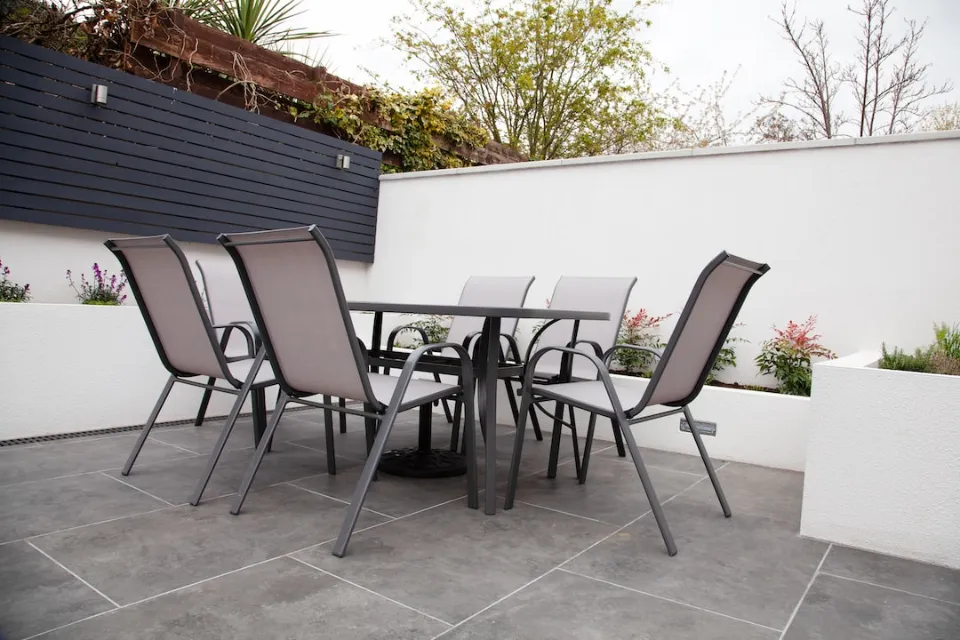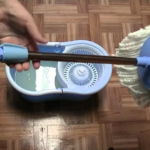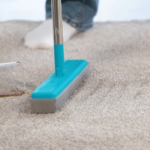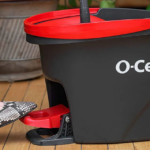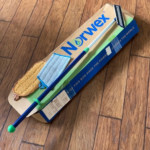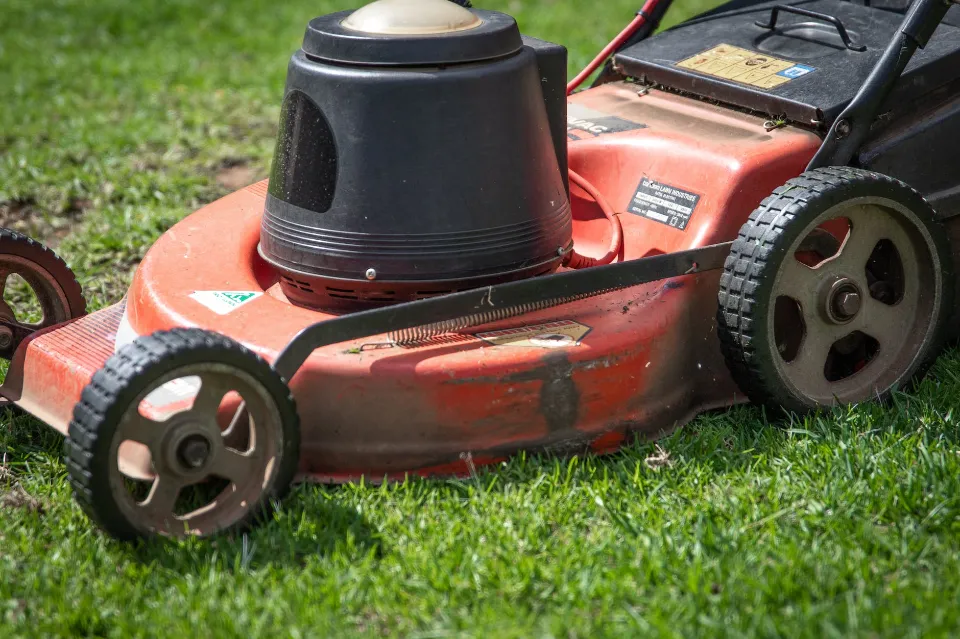Both the terms porcelain and ceramic refer to manufactured ceramic products, but porcelain tiles are fired at higher temperatures for a longer period of time than ceramic.
It’s crucial to remember that each surfacing material has unique qualities of its own. One may be better suited than the other for particular projects as a result. What distinguishes ceramic tile from porcelain, then? Clearly defining the differences between the two is what Cosmos SurfacesTM is here to do.
Definition of Ceramic and Porcelain
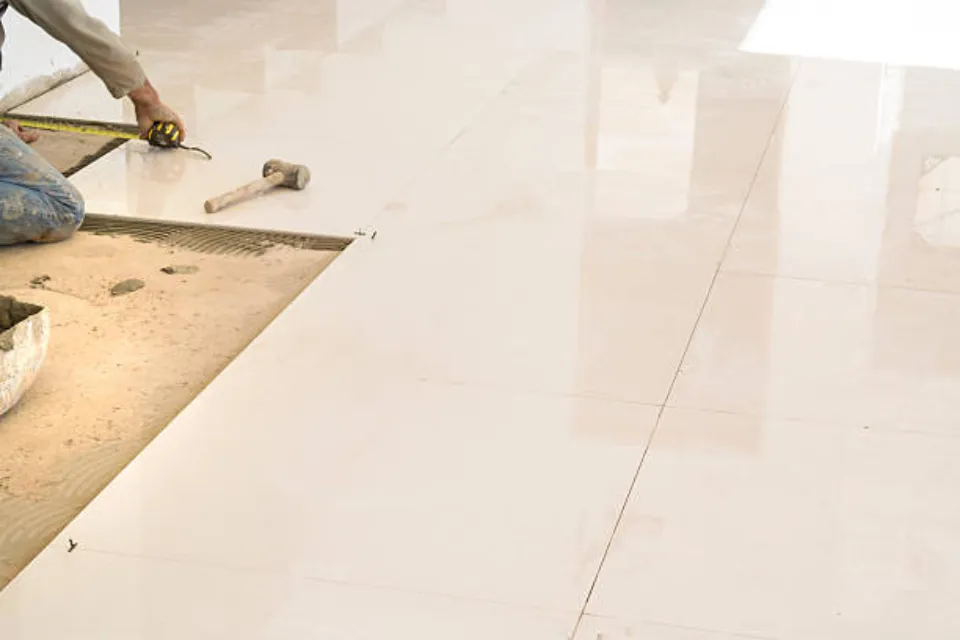
It can be confusing to differentiate between ceramic and porcelain materials, as they have many similarities. Both objects are made of fired and glazed clay. However, they have some important differences as well. This article will look at the key definitions of ceramic and porcelain and explore how they differ from one another.
Definition of Ceramic
Ceramic is a broad term for various materials that are made by firing clay or other mixtures at extremely high temperatures. Typically, it includes items like cookware, tiles, and pottery. Ceramic surfaces can be painted or glazed to produce a variety of looks.
Ceramics are usually broken down into three categories: porcelain, stoneware, and earthenware.
- Porcelain is denser than stoneware and earthenware, which makes it the strongest type of ceramic. Porcelain has an incredibly smooth surface that lends itself well to decorative treatments like hand painting or airbrushing in addition to its strength and durability. Porcelain is also the least porous type of ceramic material, making it perfect for use in bathrooms or kitchens where watertightness is crucial.
- Earthenware is the softest type of ceramic material and can be very delicate in nature. It also has a propensity to take in moisture quickly. Due to its lack of strength and durability, earthenware pieces are typically thicker than their porcelain counterparts. As a result, they are frequently made in plainer shapes with less ornamentation because any intricate details might be too delicate to withstand repeated use or exposure over time.
- Stoneware falls somewhere between porcelain and earthenware in terms of strength and durability making it a popular choice for everyday items like plates or mugs since it can withstand some wear-and-tear but isn’t overly fragile like earthenware pieces tend to be. Stoneware has been used throughout history for many types of items including storage jars, jugs, figurines and table services sets due its versatility in design options depending on the levels at which it’s fired during production processes.
Definition of Porcelain
Porcelain is a fine-grain ceramic material made from kaolin, a white clay mined in various parts of the world. It is used for tableware, tiles, and other applications where strength, hardness and stain resistance are desired.
Porcelain has an extremely low porosity—it is nearly waterproof—and it is considered to be thermal shock resistant. It is chemically inert, unlike other ceramics, and can withstand temperatures of up to 1800 degrees Fahrenheit. Porcelain is perfect for many applications because it can accept a huge variety of decorative glazes and finishes.
When comparing porcelain to its relative ceramic, there are some key differences to consider:
- Porcelain has a finer grain than ceramic and its ingredients go through more processing before they can be used as a material choice.
- Due to its high degree of density, porcelain is more durable than ceramics but it also costs more because of the processing involved in producing the material.
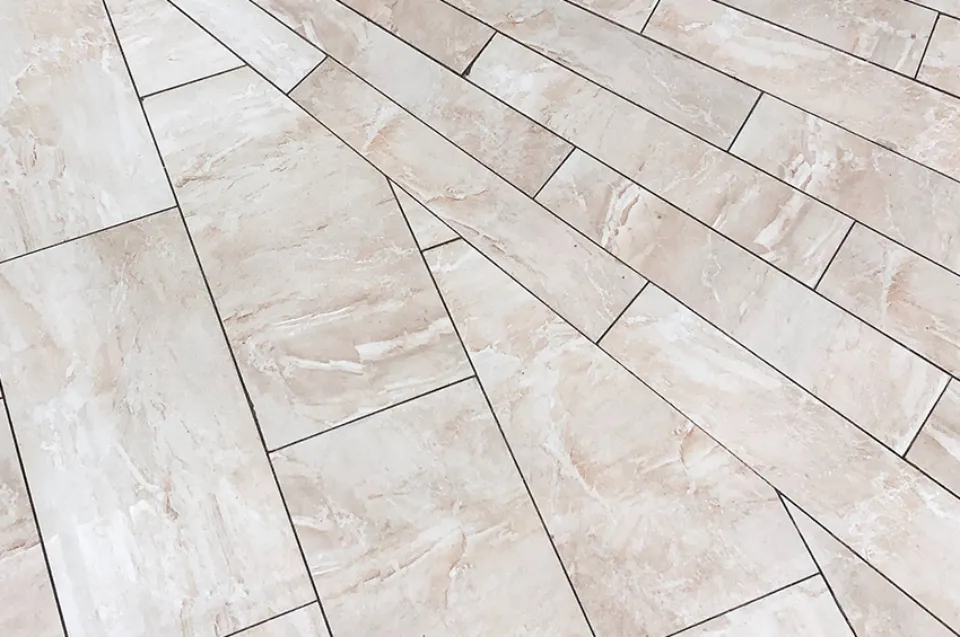
Differences in Composition
One of the main differences between ceramic and porcelain is in their composition. Clay, feldspar, silica, and other minerals are used to make porcelain, whereas clay, sand, and other materials are used to make ceramics. Because the properties of these two types of materials vary, so do their applications. Let’s take a look at the differences in composition between ceramic and porcelain:
- Minerals like clay, feldspar, silica, and others are combined to create porcelain.
- Ceramic is made from clay, sand, and other materials.
Difference in Clay Composition
Porcelain and ceramic both refer to manufactured ceramic products, but the distinction between them depends on the type of clay used to make them. Porcelain is made from a fine-grained material called kaolin clay, while ceramics are usually made from a coarse-grained material called earthenware.
Porcelain and ceramic have different properties due to the composition of the clay.
- Porcelain is highly durable while still being lightweight and non-porous, making it resistant to staining, scratching, cracks, warping and heat. Furthermore, it isn’t affected by food or drink, so it won’t easily smell bad or turn yellow. Its elegant appearance makes porcelain perfect for formal dinnerware sets as well as decorative accents in home decor.
- Ceramics have a more rustic appearance due to their earthenware base (usually clay with sand or grog). Since they are lighter than porcelain, earthenware ceramics can be used to create dishes with complex shapes or patterns, but they are typically less robust. When dropped, exposed to intense heat, or submerged in water, ceramic items are easily broken. Thicker pieces, on the other hand, are ideal for serving bowls or garden urns because they can last for years if handled properly.
Difference in Glaze Composition
When comparing ceramic and porcelain pieces, one of the most significant differences between the two relates to their glaze composition. Quartz, feldspar, and clay are the main ingredients in both materials. Porcelain differs from ceramic in that it has a denser body and finer particles, which after firing allow for smoother surfaces and sharper designs. It is also less porous than ceramic, so it holds water better, which makes it suitable for high-traffic or commercial areas.
The types of minerals used in their production are the primary distinction between porcelain and ceramic. Generally speaking, porcelain items contain kaolin clay that gives them greater strength compared to other ceramics such as earthenware or stoneware with minerals like iron and manganese added in varying amounts during production to ensure consistency and glossiness during firing. Glaze composition also differs – porcelain glazes usually contain feldspar while ceramics may not, or have a mix of other minerals added like iron oxide in order to create colour variations within specific pieces. In addition, some companies utilize glazing agents like waxes, resins and polymers on some varieties of ceramic for improved performance characteristics.
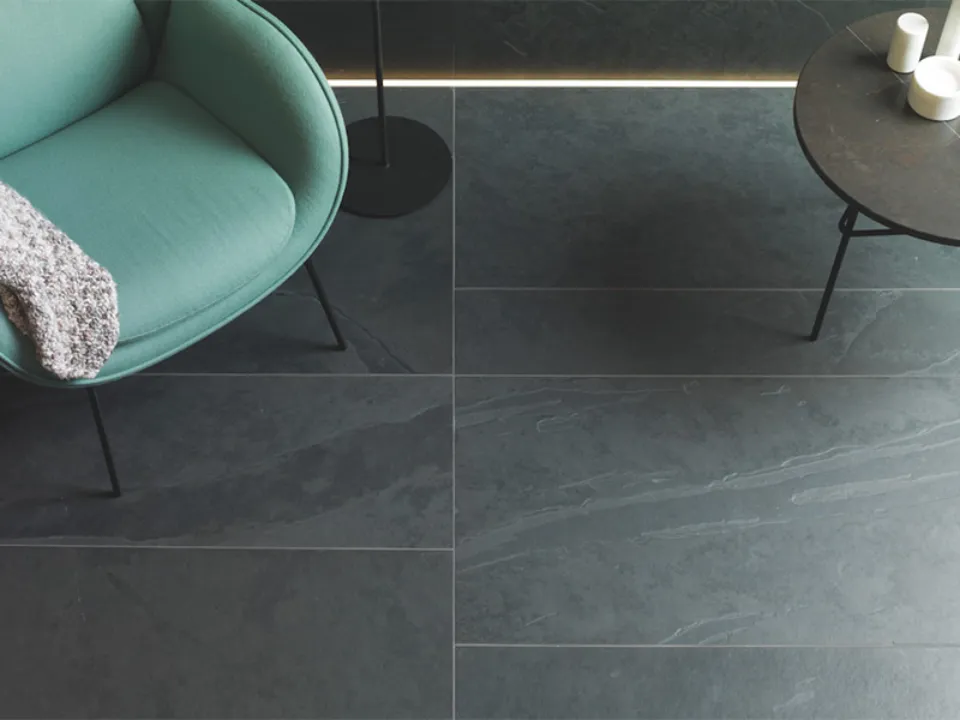
Differences in Appearance
One of the main differences between ceramic and porcelain is the appearance. Ceramic is typically more rustic and natural in its look. The material typically has a rougher texture, and the colors tend to be more intense and muted. Porcelain, on the other hand, is usually smoother and more refined. Porcelain tiles can also be made to be extremely glossy and reflective.
Let’s take a closer look at the differences in appearance between ceramic and porcelain:
Difference in Color
Ceramic and porcelain are two materials that share many of the same properties, but they have a few important differences. The appearance of the two is one of the most obvious distinctions.
Ceramic typically has a thicker, rougher texture that looks matte or just a little glossy. Ceramic comes in a variety of colors, including almost white, gray, and beige. Due to its thick texture, ceramic pieces have distinct edges and ridges that feel rough to the touch.
Porcelain on the other hand is much smoother and often shiny due to its higher density and fired at a higher temperature than ceramic. Porcelain pieces have glossier finishes that give them a more polished appearance and feel. Because there are more color options for porcelain than for other materials thanks to the presence of metal oxides during the manufacturing process, it’s possible to find porcelain items in hues of blue, green, yellow, or even pink.
Difference in Texture
The main difference between ceramic and porcelain is texture. Ceramic tile surfaces are slightly rough, while porcelain tiles have a smoother, polished feel to the touch. Porcelain is also much harder than ceramic tile, which makes it ideal for heavier traffic areas in your home like entryways and hallways, while ceramic is better suited to areas with light foot traffic like backsplashes and bathroom walls.
Ceramic tile comes in a variety of shapes and textures as well; from matte finished natural stone options to glossy glazed finishes that imitate the look of marble or granite. Porcelain is typically made in a more consistent shape—typically square or rectangular—with a solid color and glaze that won’t chip or wear off over time. This makes it perfect for creating intricate designs, such as mosaic-style back splashes or floor patterns.
Due to its greater cost-effectiveness, ceramic tile frequently uses more color patterns than porcelain, which typically stays monochromatic due to its higher overall cost. Porcelain also has lower water absorption rates and is less porous than ceramic tiles, which makes it easier to maintain cleanliness in areas where there may be potential moisture issues or spills.
Differences in Durability
Ceramic and porcelain tiles have some key differences, especially when it comes to durability. While porcelain tiles are more durable and hard wearing than ceramic, and are therefore better suited for areas of high traffic, ceramic tiles are still a popular choice for interior design. Let’s examine how these two types of tiles differ from one another in terms of durability.
Difference in Strength
The amount of raw materials used in the production process is the main distinction between ceramic and porcelain. Ceramic tile is made with a mixture of clay and other natural materials, including water for humidity. Porcelain tends to have a higher proportion of clays, combined with feldspar, silica sands and other minerals, resulting in a harder, less porous product.
A material’s durability is also influenced by its strength. Generally speaking, porcelain tile is stronger and more durable than ceramic tile as it is more resilient to scratches and wear-and-tear. This makes it a perfect option for spaces with frequent or heavy foot traffic, as well as for environments with extremes of temperature or moisture. Additionally, due to its nonporous surface, porcelain tile resists staining better than ceramic tile (making it ideal for bathrooms). Additionally, porcelain is more shock-resistant than ceramics, making it a better choice for outdoor applications or locations where objects might be dropped or jolted into the flooring surfaces by accident.
Overall, porcelain requires less maintenance than ceramic tiles and is overall more durable when compared side-by-side with ceramics. As a result, porcelain tile is a great investment for your home’s flooring needs and a desirable option when determining which type of tile is best for different rooms in your home. Porcelain tile can withstand heavy traffic conditions longer.
Difference in Water Resistance
The degree of water resistance between ceramic and porcelain is one of the biggest distinctions. There are two types of ceramic tiles: glazed and unglazed. Glazed ceramic tiles are usually more resistant to water than unglazed ceramic tiles, making them better suited to bathrooms, kitchens, balconies and other wet areas. The glazing on porcelain tiles also makes them much less absorbent (generally less than 0.5%) and highly resistant to damage from oils, acids or alkalis.
Ceramic tile typically has a higher absorption rate than porcelain tile and is not recommended for moist or wet environments such as showers or as flooring in front of sinks and bathtubs. If you need a higher level of water resistance, porcelain is the material of choice. It is also more durable then ceramic tile which makes it ideal for high traffic locations such as shopping malls or residential hallways where the floors must withstand heavy foot traffic without cracking or breaking over time.
Differences in Price

When it comes to ceramic and porcelain, one key difference is the price. Porcelain is usually more expensive than ceramic due to the amount of labour and materials required to produce it. Ceramic is considered to be more affordable, which makes it a great option for those on a budget. But porcelain and ceramic each have particular qualities and features that set them apart.
Let’s take a closer look at some of the key differences in price between the two materials:
Difference in Cost
When shopping for ceramic and porcelain items, you may be struck by the range of prices – from as low as a few dollars to more costly pieces that can run several hundred. It’s important to understand that this isn’t simply reflective of labels or design aesthetics – there are genuine differences between ceramic and porcelain that point to their variation in cost.
Ceramic is typically cheaper than porcelain because it has a lower firing temperature during production. It needs to be fired much more intensely to produce true porcelain, which results in a stronger material with fewer impurities in the mix. This is why most people consider it worth the extra cost – high-fire ceramics offer greater durability and strength, meaning they are less likely to shatter or crack over time.
Not all ceramics are considered equal either; many traditional styles of pottery like earthenware will not be nearly as strong, despite it’s relatively lower cost point. If you’re looking for an option between earthenware and porcelain, consider stoneware – a sturdy middle ground with strength close to porcelain but at ceramic prices or even cheaper due to its faster firing times.
Overall, when determining which material is best for your needs you should take into consideration how the different prices may reflect the long-term value of your purchase. ‘Cheaper’ does not necessarily reflect ‘better’ when it comes to ceramics and porcelains – so take time to educate yourself on the differences before committing to a purchase!

Difference in Availability
While ceramic and porcelain products can both be found in a variety of stores and online outlets, availability of these items depends on their intended use. Ceramic tile is perhaps one of the most common applications for ceramic product and can be found almost anywhere. However, porcelain tile is often more difficult to find because it is not as widely used in residential homes as traditional ceramic tile.
Porcelain products are also less available for homeware applications such as countertops, table settings, place settings, etc., due in part to the fact that their production costs are higher than those for traditional ceramics. Due to the additional time required to produce them and the additional care required to ensure they won’t become damaged over time, porcelain products typically cost significantly more than other ceramics.
FAQs
Which is Better Porcelain Or Ceramic?
Porcelain tile is more resistant to wear and tear than ceramic tile due to its density, which also increases its durability. Because of this, it is better suited for both business and residential use. Ceramic tile is more resistant to water than porcelain tile, which is almost impervious.
Why is Porcelain Better Than Ceramic?
Compared to ceramic tiles, porcelain tiles are denser and less porous. They absorb less water because they are harder and therefore more durable. Because of this, they are better suited to areas with high traffic and frequent use.
Is Porcelain More Breakable Than Ceramic?
Ceramic is more brittle than porcelain because of the less dense clay mixture used to make it. Porcelain is made at higher temperatures, which also make it extra-hard. However, compared to many stone tiles, porcelain tiles are more prone to cracking when used as flooring.
Check the following mop reviews before buying!
The Mr. Clean Spin Mop heads work best for dust mopping and absorb too much water for wet mopping. But wringing out the mop is extremely difficult.
When it comes to surface exposure, the Libman Tornado Twist Mop is a far better option than sponge mops. Even with vigorous scrubbing, you can clean with it effectively.
Mighty Thirsty Mop is a quick-absorbing mop made of polymer. Its thin mop head can fit underneath furniture and into other small spaces around the house.
If you have the Floor Police Motorized mop, you can quickly and easily spin away that dirt! The spin mop that does all the work for you is a cordless, lightweight product.
The cleaning efficacy and usability of the Bona Spray Mop are its greatest benefits. Use it to maintain the floors in between more thorough moppings.
With the Bissell PowerFresh steam mop, you can mop more effectively while saving money and combining convenience and power.
O Cedar Mop is incredibly shaky and spills way too easily. If you have to pick up the clean water tank, it will stop spinning and be inoperable.
The H20 X5 Mop won our comparison as the most adaptable mop. This mop effectively removed stains from the floor that had been there for several hours.
The Norwex Mop is available in two sizes (large and small) and three different mop pads. The system is easy to use if you follow the directions.

The Shark Steam Mop is a cheap steam mop that does a good job of sweeping and disinfecting floors. This Shark steam mop is a lightweight, simple-to-use steam cleaner.

